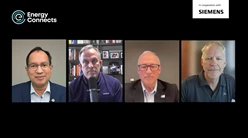Energising the future by tripling nuclear capacity by 2050
Collaboration is essential in addressing multinational, multigenerational and multigender challenges like climate change or energy poverty because they transcend borders, generations, and social groups. Effective solutions require the pooling of diverse perspectives, resources, and expertise from around the world. By working together, countries, communities, and organisations can share innovation, best practices, and resources, so we can eradicate these problems in a sustainable, timely, cost-effective, and equitable manner.
Nuclear energy today generates 9% of the world’s electricity, and around a quarter of clean electricity. Since the turn of the 21st century, the global fleet of nuclear reactors have performed consistently well, with high capacity factors driven by innovation and information sharing, ensuring stable generation. However, if we are to meet our collective energy security and sustainability goals while increasing electricity consumption, the provision of nuclear energy cannot remain static. That is why World Nuclear Association is leading the ambition to triple global nuclear energy capacity by 2050.
Tripling nuclear energy capacity
Initially launched at World Nuclear Symposium in September 2023 and in partnership with Emirates Nuclear Energy Corporation ahead of COP28 in Dubai, the goal has earned support from 31 countries through the Declaration to Triple Nuclear Energy and more than 140 nuclear industry companies through an accompanying industry pledge. Fourteen of the world’s largest financial institutions backed the goal in September 2024, during New York Climate Week, and most recently on the sidelines of CERAWeek 2025 in Houston, a global coalition of major energy users signed a pledge endorsing the same goal.
In particular, big technology companies are increasingly partnering with nuclear energy providers to power data centres, anticipating increased electricity demand from the AI revolution. Nuclear energy is essential to providing the abundant and resilient carbon-free electricity for digital technology. Beyond the tech sector, the manufacturing, metallurgical, and chemical sectors are considering nuclear energy for clean, reliable, and economical energy. The oil and gas industry are assessing how nuclear energy can decarbonise emissions in exploration, extraction, refining, and processing. While the transport sector is working to streamline the introduction of civil nuclear propulsion and carbon-free fuels to achieve sustainability targets.
Energy policies: moving from goals to action
The aim of the ambitious, but realistic, goal of tripling nuclear capacity is to align as many stakeholders as possible - governments, financial institutions and energy users, as well as the nuclear sector, to work together to realise the goal. World Nuclear Association is working tirelessly with industry and partners to overcome challenges. Whether that be getting multilateral banks, such as the World Bank, to recognise sustainability credentials and provide equal borrowing rates to nuclear projects; mobilising the supply chain to deliver programmes of new build; or streamlining design licensing and harmonisation between national regulators. External and public support through the pledge to triple helps provide a signal and gives certainty to industry to expand the nuclear sector.
Today there are 66 reactors (~70GWe) under construction, and a further 430 reactors (~450GWe) planned or proposed, totalling over 500GWe of new nuclear capacity. For context, this equates to half of the 1000GWe new nuclear needed by 2050 to triple nuclear. However, the impact of the declaration to triple nuclear energy is more focused on policy change and shifting to a programmatic approach rather than specific projects. Since September 2023, there has been policy change in many countries to reverse new build bans, phase outs or start new programmes of nuclear, as well as major programme announcements such as at least 100GWe in India and 200+100GWe in USA (not included in the 500GWe planned or proposed projects above).The clean energy transition requires a technology-agnostic and ambitious energy policy framework that incentivises innovation and investment. This shift in policymakers towards pragmatic, science-based policies balance environmental priorities with socio-economic development and prosperity for everyone everywhere.
World Utilities Congress 2025 will focus on themes reflecting the energy sectors commitment to a sustainable future, pioneering innovation, and engaging with communities. These themes align with the work of World Nuclear Association highlighting the global nuclear industry’s role in providing sustainable, secure, and affordable energy. By working together and leveraging technology, we can create a resilient energy future.
Energy Connects includes information by a variety of sources, such as contributing experts, external journalists and comments from attendees of our events, which may contain personal opinion of others. All opinions expressed are solely the views of the author(s) and do not necessarily reflect the opinions of Energy Connects, dmg events, its parent company DMGT or any affiliates of the same.






